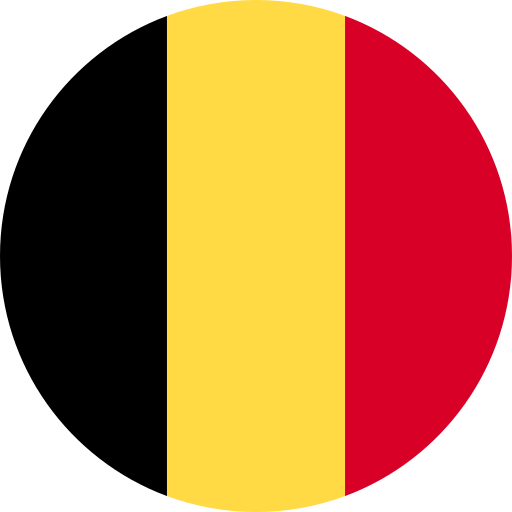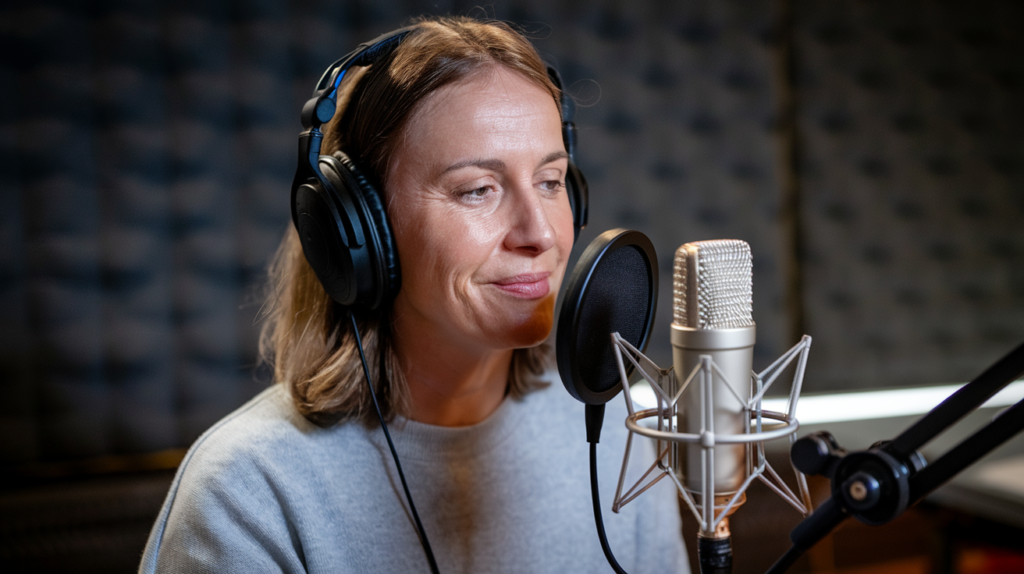Belgium’s rich cultural tapestry is woven from a blend of French and Flemish influences, creating a unique identity that’s both vibrant and diverse. This fusion shapes everything from art to music, reflecting the nation’s complex history and regional dynamics. As you explore Belgian culture, you’ll discover how these two linguistic communities have shaped media narratives and artistic expressions.
In this article, we’ll delve into the fascinating interplay between French and Flemish elements in Belgium’s cultural landscape. You’ll see how this duality not only enriches local traditions but also influences contemporary media trends. Join us on a journey through Belgium’s captivating cultural scene where every facet tells a story of collaboration and creativity.
Key Takeaways
- Belgium’s cultural identity is a unique blend of French and Flemish influences, enriching its art, music, and literature.
- Historical events have shaped the dynamic relationship between the French-speaking Walloons and Dutch-speaking Flemings, influencing local traditions and media representation.
- The impact of French influence is evident in Belgian literature and journalism, with bilingual works that resonate with diverse audiences.
- Flemish contributions to visual arts, architecture, and theater highlight the region’s rich heritage while promoting contemporary artistic expressions.
- Collaboration between French and Flemish media professionals enhances storytelling but also presents challenges due to linguistic differences.
- Cultural festivals serve as crucial platforms for showcasing Belgium’s diverse media landscape, fostering unity through shared artistic appreciation.
Overview of Belgian Culture
Belgian culture showcases a rich tapestry woven from French and Flemish influences, resulting in diverse traditions that reflect the country’s unique heritage. Art, music, and literature thrive amid this cultural blend, with each community contributing distinctive elements.
Visual arts play a significant role in Belgium’s cultural landscape. Renowned painters such as René Magritte and Pieter Bruegel the Elder highlight the nation’s artistic prowess, while contemporary artists continue to push boundaries through innovative mediums. Festivals celebrating these art forms draw international attention, promoting local talent.
Music also flourishes in Belgium. The country is known for its vibrant music festivals—such as Tomorrowland—that attract global audiences. Various genres find their place here, including pop, rock, jazz, and classical music. Collaboration between musicians from different linguistic backgrounds often enhances creativity within the industry.
Moreover, Belgian literature reflects the duality of its cultural identity. Writers like Georges Simenon and Amélie Nothomb articulate complex themes that resonate with audiences worldwide. This literary tradition continues to evolve as new voices emerge from both communities.
The voiceover industry plays an essential role in conveying Belgium’s stories across various media platforms. Voice actors provide localized content that resonates with different audiences while showcasing regional dialects and nuances inherent in the language. This specialization ensures authenticity in advertisements, animations, documentaries, and more.
Belgium’s culture thrives on collaboration among its linguistic communities through visual arts, music festivals, literature contributions, and voiceover talents—all enriching its dynamic cultural narrative.
Historical Context of French and Flemish Influence
Belgium’s cultural identity stems from a rich historical backdrop shaped by French and Flemish influences. This duality has created an intricate tapestry that informs various aspects of life, including the arts, media, and regional dynamics.
The Role of Historical Events
Historical events significantly impacted the relationship between the French-speaking Walloons and the Dutch-speaking Flemings. The establishment of Belgium as an independent nation in 1830 marked a pivotal moment for both communities, resulting in ongoing debates about language rights and cultural recognition. World Wars I and II further complicated this relationship, leading to shifts in political power that affected local traditions and media representation. These historical milestones contributed to a unique blend of artistic styles and narratives within Belgian culture, with each community influencing one another through collaboration.
Language and Regional Dynamics
Language plays a crucial role in shaping Belgium’s cultural landscape. The division between French and Flemish regions creates distinct identities while fostering collaborations across linguistic boundaries. In media sectors like film, literature, and voiceover production, bilingualism enhances creative opportunities. Voice talent often adapts their skills to resonate with diverse audiences by embracing regional dialects or themes specific to either community. This adaptability ensures authenticity in storytelling while enriching Belgium’s overall cultural output.
These elements underscore how French and Flemish influences intertwine within Belgium’s cultural fabric, affecting everything from arts to contemporary media trends.
French Influence on Belgian Media
French influence significantly shapes Belgian media, particularly in literature and journalism. This impact reflects the historical interplay between French-speaking Walloons and Dutch-speaking Flemings, creating a rich literary landscape.
Literature and Journalism
Belgian literature thrives under French influence, featuring acclaimed authors who explore complex themes relevant to both local and international audiences. Writers produce works that delve into identity, culture, and society while utilizing bilingualism to reach diverse readers. The press operates similarly; major newspapers often publish content in both languages, ensuring comprehensive coverage of national issues.
Journalistic practices incorporate elements from both linguistic communities. Investigative journalism flourishes through collaborations between French and Flemish journalists, leading to thorough reporting on social justice topics. Furthermore, literary festivals promote dialogue among authors across languages, enhancing the cultural exchange within Belgium’s media landscape.
Film and Television
Film and television also reflect France’s strong presence in Belgian media. Many films draw inspiration from French cinema styles while incorporating local narratives that resonate with audiences. Bilingual productions allow filmmakers to present stories authentically across regions.
Television networks air shows in both languages, catering to varied demographics while fostering a sense of unity among viewers. Voiceover talent plays an essential role here by providing translations or adaptations for regional dialects. This approach ensures that content remains relatable and accessible to all Belgians regardless of their linguistic background.
The fusion of French influences permeates various aspects of Belgian media—from literature to film—creating an environment ripe for collaboration among language communities while highlighting the importance of voiceover contributions in bridging cultural gaps.
Flemish Contributions to Belgian Culture
Flemish contributions significantly enrich Belgian culture through various artistic expressions and traditions.
Visual Arts and Architecture
Visual arts in Flanders showcase a rich heritage characterized by renowned painters like Pieter Bruegel the Elder and Jan van Eyck. Their works, with intricate details and vibrant colors, embody the region’s artistic innovation. Today’s contemporary artists continue this tradition while exploring modern themes that resonate globally. Flemish architecture reflects a blend of Gothic, Renaissance, and Baroque styles, evident in iconic structures such as the Cathedral of Our Lady in Antwerp. Festivals celebrating visual arts attract both local and international audiences, fostering appreciation for Belgium’s cultural wealth.
Theater and Performing Arts
Theater thrives in Flanders, offering diverse performances ranging from classical plays to contemporary productions. Flemish theater companies often collaborate across linguistic boundaries, enriching narratives with unique perspectives. Productions frequently highlight local stories while incorporating universal themes that engage broader audiences. Additionally, music plays an essential role; festivals featuring opera, dance, and live performances draw significant crowds throughout the year. Voice talent enhances theatrical experiences by bringing characters to life through skillful interpretation. The presence of voiceover artists adds depth to multimedia projects associated with theater productions, ensuring authenticity resonates within each performance.
The Interplay Between French and Flemish Media
The media landscape in Belgium reflects a dynamic interplay between French and Flemish influences. This interaction shapes content creation, audience engagement, and the overall cultural narrative.
Collaboration and Conflicts
Collaboration occurs frequently across media sectors, enhancing creative output while addressing local stories. Joint projects by French-speaking and Flemish media professionals foster diverse perspectives on national issues. However, conflicts also arise due to linguistic differences, affecting distribution channels and audience reach. These tensions highlight the need for balanced representation in both languages to ensure that all communities feel included.
Cultural Festivals and Events
Cultural festivals present opportunities for showcasing the richness of Belgian media. Events like Film Fest Gent celebrate cinema from both linguistic backgrounds, attracting international attention. Such gatherings promote collaboration among filmmakers and voice talent from different communities, enriching storytelling through shared experiences. Festivals often feature programs that emphasize bilingual performances or adaptations of regional works, uniting audiences under a common appreciation for art.
The interplay between French and Flemish media creates a vibrant environment where collaboration thrives alongside challenges. This synergy ensures that Belgium’s cultural identity continues to evolve through innovative storytelling across various platforms.
Conclusion
Belgium’s cultural landscape is a vibrant blend of French and Flemish influences. This unique fusion not only enriches artistic expression but also fosters collaboration across various media platforms. As you explore Belgian culture, you’ll discover how these linguistic communities shape everything from literature to music.
The ongoing dialogue between French and Flemish traditions ensures that Belgium remains a dynamic hub for creativity. By embracing both identities, the nation continues to celebrate its rich heritage while paving the way for innovative storytelling and artistic endeavors. Dive into this fascinating culture and experience the beauty of its intertwined narratives firsthand.
Frequently Asked Questions
What are the main influences on Belgian culture?
Belgian culture is primarily influenced by French and Flemish traditions. This blend shapes various aspects of cultural life, including art, music, literature, and local customs. The interplay between these two linguistic communities creates a unique cultural identity that is rich in diversity.
Who are some famous Belgian artists?
Renowned Belgian artists include painters like René Magritte, Pieter Bruegel the Elder, and Jan van Eyck. Contemporary artists continue to contribute to Belgium’s artistic landscape, showcasing innovative styles and techniques that draw international attention.
How does music play a role in Belgian culture?
Music is vibrant in Belgium, highlighted by festivals like Tomorrowland that attract global audiences. The diversity of genres—pop, rock, jazz, and classical—reflects the country’s collaborative spirit among musicians from different linguistic backgrounds.
What themes do Belgian writers explore?
Belgian literature often delves into complex themes relevant both locally and globally. Notable authors such as Georges Simenon and Amélie Nothomb examine intricate narratives that resonate with readers across cultures while reflecting Belgium’s dual heritage.
How has history shaped Belgium’s cultural identity?
Significant historical events like Belgium’s independence in 1830 and the World Wars have influenced the relationship between Walloons (French speakers) and Flemings (Dutch speakers). These events have led to discussions about language rights and cultural recognition within the nation.
What role does bilingualism play in media?
Bilingualism enriches Belgium’s media landscape by enhancing creativity in film, literature, and voiceover production. It allows for authentic storytelling that resonates with diverse audiences while promoting collaboration across linguistic boundaries.
How do French influences manifest in Belgian journalism?
French influence is significant in Belgian journalism; major newspapers publish content in both languages for broader coverage of national issues. Collaborations between French-speaking and Flemish journalists help address social justice topics through investigative reporting.
Are there any notable cultural festivals in Belgium?
Yes! Festivals like Film Fest Gent celebrate Belgium’s rich media landscape while promoting collaboration among filmmakers from different communities. Such events highlight local stories through joint projects that unite audiences under a shared appreciation for art.
How does theater reflect Belgian culture?
Theater thrives particularly in Flanders with a variety of performances ranging from classical plays to contemporary works. Productions often emphasize local stories while incorporating universal themes that resonate widely with audiences.
What impact does voiceover talent have on culture?
Voiceover talent enhances theatrical experiences and multimedia projects by providing localized content that reflects regional dialects. This authenticity adds depth to performances while ensuring relatable storytelling across various platforms.







